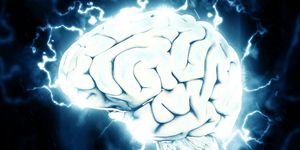The Complex Influence of Epigenetics on Cell Fate & Gene Expression
As the human body is developing, cells have to differentiate and specialize into certain specific types of cells, so they can carry out the correct function where they are supposed to, whether they are cells in the liver, heart, brain, or some other tissue. Scientists have long been studying the process of cell differentiation, which is closely connected to the expression of genes. But other factors in the genome are at work during this process as well.
Epigenetic features of DNA refer to modifiable aspects like structure, or chemical tags that may be attached or removed, and which modify gene expression without changing the sequence of the genome. A new study has explored how epigenetic mechanisms influence cell differentiation. The findings have been reported in Nature Neuroscience.
Organoids are simplified, miniature versions of human organs that are made from genetically modified cells that are engineered to behave as stem cells. They were used in this study to reveal how the epigenome is involved in the developmental process of various cells. The researchers wanted to create an epigenetic map that followed the transition of pluripotent stem cells into specific types of neurons.
The study focused on an epigenetic feature known as histone modifications, which affect the 3D structure of the genome, and influence the genes that are available to the cell for expression. One repressing and two activating histone modifications were mapped as the neuronal cells progressed through different stages of development.
Epigenetic switches were identified, which changed between activating or repressing histone modifications. The switching was found to arise prior to cell fate decisions, and could be used to predict cell fate. When one of the histone modifications was removed, cells did not divide normally.
Another recent study examined another epigenetic mark known as H3K9 methylation in a plant model organisms called the thale cress. This feature has been linked to the halting of gene expression. But scientists have reported in Science Advances that this epigenetic feature actually functions more like a dial that can turn down gene expression instead of totally turning it off.
The mechanism is a complex one as well: H3K9 is aided by two proteins called LDL2 and ASHH3, one of which has an effect on another epigenetic mark called H3K4 methylation. ASHH3 can trigger gene activity by stopping LDL2's function with yet another epigenetic marker called H3K36 methylation.
The studies have shown that we still have a lot to learn about the genome, but with careful research, we are uncovering new details all the time.
Sources: Medical Express, Nature Neuroscience, Science Advances





![Everything You Need To Know About NGS [eBook]](https://d3bkbkx82g74b8.cloudfront.net/eyJidWNrZXQiOiJsYWJyb290cy1pbWFnZXMiLCJrZXkiOiJjb250ZW50X2FydGljbGVfcHJvZmlsZV9pbWFnZV9mNTM1ZjIyYzA5MDE5ZmNmMWU5NmI0ZDc4NWU2MzdiZTZlN2I5ZDk5XzE4NDUuanBnIiwiZWRpdHMiOnsidG9Gb3JtYXQiOiJqcGciLCJyZXNpemUiOnsid2lkdGgiOjcwMCwiaGVpZ2h0IjozNTAsImZpdCI6ImNvdmVyIiwicG9zaXRpb24iOiJjZW50ZXIiLCJiYWNrZ3JvdW5kIjoiI2ZmZiJ9LCJmbGF0dGVuIjp7ImJhY2tncm91bmQiOiIjZmZmIn19fQ==)



